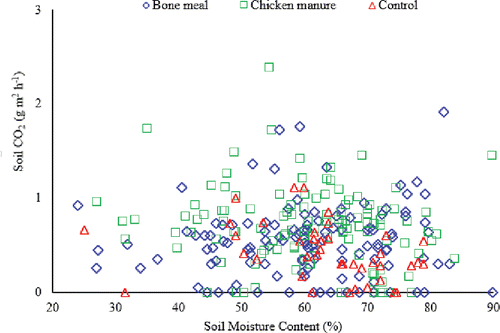Figures & data
Table 1. Soil texture, saturated hydraulic conductivity (Ksat), available water content (θaw), Organic carbon (OC), bulk density (ρb) and cation exchange capacity (CEC) of Waialua gravelly clay variant (isohyperthermic Pachic Haplustoll) of Waimanalo research station.Citation[38]
Table 2. Calculations of the recommended dry weight application rates of chicken manure and bone meal based on 3.01 and 10% N contents, respectively. Rates were calculated based on the recommendations by Abbas and Fares.Citation[18]
Table 3. Chemical properties of bone meal and chicken manure: adapted from Abbas and Fares Citation[18] and Valenzuela et al.Citation[39]
Table 4. Analysis of variance results of soil CO2 flux as a function of irrigation level (IRR), organic amendment type (OA) and rate.
Figure 1. Soil CO2 emission variations between organic amendment (chicken manure and bone meal) types based on the results of the Tukey's HSD post hoc statistical test. Organic amendemnts not sharing the same letter are significantly different at P < 0.05.
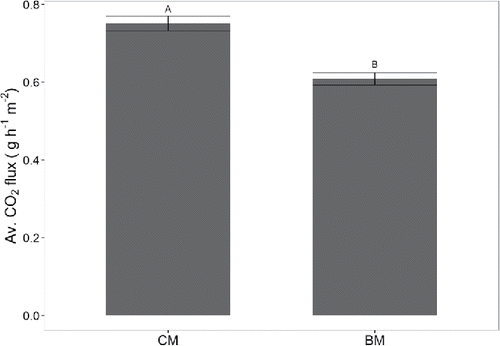
Figure 2. Comparison of soil CO2 emissions between OA rates based on the results of the Tukey HSD post hoc statistical test. Application rates not sharing the same letter are significantly different at P < 0.05.
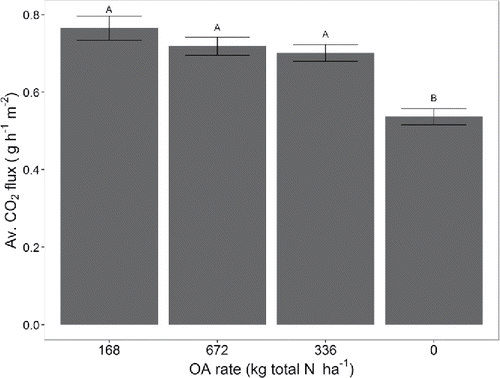
Figure 3. Interaction effects of organic amendment type and rate on soil CO2 emissions based on the results of the Tukey HSD post hoc statistical test. Application rates not sharing the same letter are significantly different at P < 0.05.

Figure 4. Cumulative soil CO2 flux between organic amendemnt rates (a) and between irrigation levels (b).
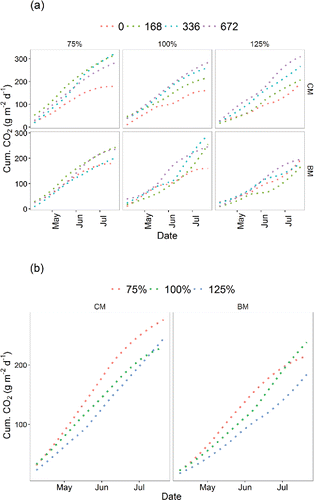
Figure 5. Daily ambiant air minimum (Tmin) and maximum (Tmax) temperatures and rainfall records at the Waimanalo Research Station.
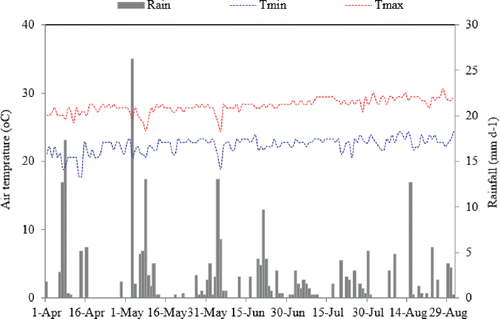
Table 5. Analysis of variance results of soil moisture content as a function of irrigation level (IRR), organic amendment type (OA) and rate.
Figure 6. Effects of OA rates on average soil moisture content based on the results of the Tukey's HSD post hoc statistical test. Application rates not sharing the same letter are significantly different at P < 0.05.
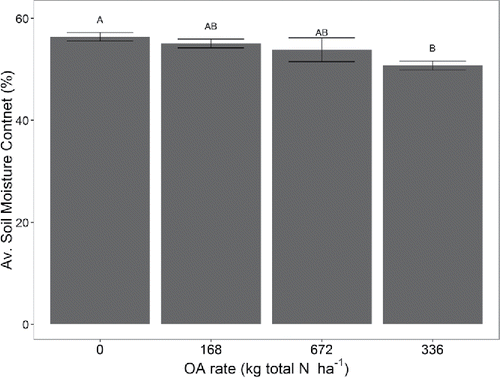
Table 6. Analysis of variance results of soil organic matter as a function of irrigation level (IRR), organic amendment type (OA) and rate.
Figure 8. Comparison of soil organic matter content between soils amended with different OA rates based on the results of the Tukey's HSD post hoc statistical test. Application rates not sharing the same letter are significantly different at P < 0.05.


